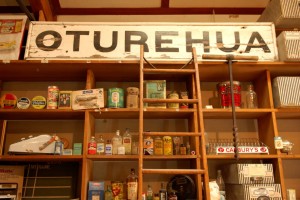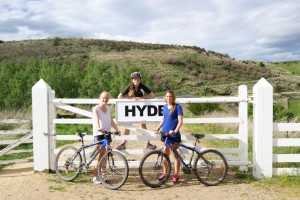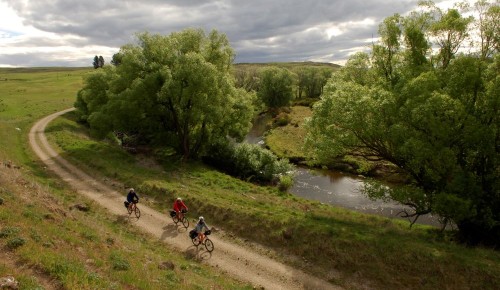History of the Otago Central Rail Trail
The gold rush had already started waning when residents of Dunedin, then New Zealand's richest town, started lobbying for a railway through to Central Otago in 1871.
Seven years of fighting over seven potential routes followed, finally resolved by the local Member of Parliament's lobbying.
It took hundreds of men 15 years from 1891 to build the 150 km track from Middlemarch to Clyde. They used picks, shovels, wheelbarrows and explosives. Stones were hauled in by sledge, sand for mortar was carted by pack horses.
Constructing the Poolburn viaduct and tunnels took three years and 300 workers, thanks to delays caused by government cutbacks, snow, heavy frosts and floods.
For many years, the line stretching from Cromwell to Dunedin carried a steady stream of freight and people. Then cars became faster and more common and in 1984, New Zealand Railways' government-imposed monopoly on freight was removed.
Building of the Clyde dam delayed the line's demise, but the last train left Clyde on 29 April, 1990. The tracks from Clyde to Middlemarch were lifted in 1991.
It took seven years for the conversion from disused rail line to New Zealand's first and longest Rail Trail. New decks and handrails were installed on all of the trail's 68 bridges. All the sleepers, rails and crushed rock ballast were removed.
Otago Central Rail Trail was New Zealand's first, opened in February 2000. The Department of Conservation bought the line in 1993, three years after the last train ran. It took six years and over $850,000 to convert the trail for cyclists, horse riders and walkers.
The Otago Central Rail Trail, is sometimes mistakenly called the Central Otago Rail Trail or even Otago Rail Trail. It was developed by the Department of Conservation in partnership with the Otago Central Rail Trail Charitable Trust.
Our hosts will bring this history alive as we help you experience the Otago Central Rail Trail. When you join an OFF THE RAILS cycling adventure we will allow time so you can immerse yourself in the history of gold mining Central Otago, visit sites of interest and come away from your holiday with a new respect for the areas founding New Zealand gold mining history.
The Region
Central Otago New Zealand is an area of outstanding natural beauty which spans between the city of Dunedin and the premier resort town of Queenstown. From Queenstown it is a one hour drive through the award winning wine region of Gibbston and then through the winding Kawarau George to Clyde - the start (or finish) of the trail.
From Dunedin it is a one hour drive to Middlemarch the start (or finish) of the Otago Central Rail Trail. You can also choose to take the train (the Taieri George Railway) for your transfer to Middlemarch if you are starting with us from Dunedin. Biking the Otago Central Rail Trail immerses you in this timeless, wide open Central Otago landscape. It steeps you in the history of gold's lure, farming and rail. It leads you past basking trout and majestic tors, while overhead fly the freewheeling native Falcon, Karearea.
Oturehua poet Brian Turner, in his essay "Humanity and Nature" about Grahame Sydney's Maniototo art, captures the environment of Otago Central's Rail Trail.
Come on a New Zealand biking trip with OFF THE RAILS and experience Central Otago!
"His is not a world waiting to be used by 'adventure-tourists' and 'thrill-seekers', it is for those who prefer reflection and contemplation... In essence so many of his paintings are about staying not leaving, about enduring, hanging on. How do you persist and exist here, glory in what you see, respect what has gone before, what remains, and what will live on? What does live on? Nothing organic remains the same; little of what we, humans, make is assured of continuance. But a painting might last, a poem, a story. The land tells a story, the dilapidated buildings testify to other stories bound up in the land's story, and the clouds are transient but keep on coming, forming and reforming.
Sydney's world, his wilderness where the spirit is tested and strengthened by a pure airiness, great space, is almost always unforested. Or is it? If you can locate yourself here it is in a forest of loneliness, temperamentally, where you are exposed to yourself and everything else. You need strength of purpose, of character; you need courage to stand up here and not avert the eyes. Only through distance can you find yourself. Beyond the far blue, gold, or dun hills and mountains, beneath cirrus edged with gold, there's a self to be reckoned with.
Do we explore the land, or does it explore us?"
from 'Humanity and Nature,' by Brian Turner, in 'The Art of Grahame Sydney' (Longacre Press, 2000)







